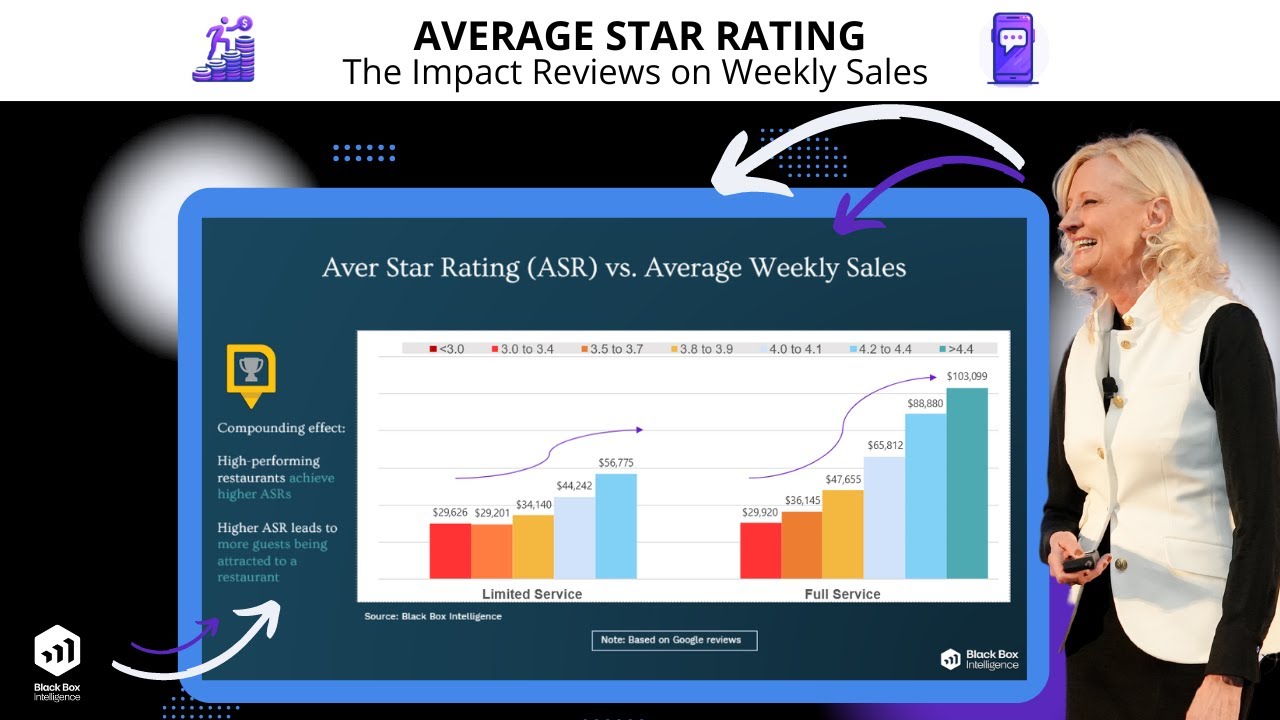Restaurant Glossary
Average Star Rating (ASR)
Definition
Average Star Rating (ASR) is a key metric used in the restaurant industry to measure customer satisfaction and overall reputation.
It represents the average of all star ratings given by customers across various review platforms, such as Google, Yelp, and TripAdvisor.
The ASR is calculated by summing all star ratings and dividing by the total number of reviews.
This metric provides a quick snapshot of a restaurant’s performance from the customer’s perspective, influencing new customer decisions, and reflecting the quality of the dining experience.
Formula
To calculate the Average Star Rating (ASR), use the following formula:

For example, if a restaurant has 100 reviews and 450 stars, then its ASR would be 4.5.
Why It Matters
- Customer Perception
When you think about your own shopping behavior, when researching for a purchase you likely check the reviews. When it comes to restaurants– it’s no different.
ASR is often one of the first things potential customers see when searching for a restaurant online.A higher ASR generally correlates with a better perception of the restaurant’s quality and can influence a customer’s purchasing decision. - Competitive Edge
In a competitive market, a higher ASR can set a restaurant apart from its competitors.Restaurants with consistently high ASRs more often attract new customers and build a loyal following. - Feedback Loop
The ASR provides valuable feedback on what customers think about the restaurant.Managers can use this information to identify strengths and areas for improvement.Using ASR as a guide for operational changes and staff training makes it easier to identify action items for areas of improvement. - Marketing and Promotions
A strong ASR can be leveraged in marketing campaigns and promotional materials to build trust with potential customers.Featuring a high ASR in advertisements or on the restaurant’s website can boost credibility and attract more visitors.
Factors Affecting ASR
- Quality of Service
Attentive, friendly, and efficient service is a major contributor to positive reviews and higher star ratings. - Food Quality
The taste, presentation, and consistency of the food directly impact customer satisfaction and reviews. - Ambiance
The restaurant’s atmosphere, cleanliness, and overall dining experience can influence how customers rate their experience. - Value for Money
Customers often consider whether the meal was worth the price, impacting their star rating. - Timeliness of Service
Long wait times or delays can lead to lower star ratings, even if the food and service quality are high.
Example in Action
A new restaurant receives 50 reviews in its first month, with an average rating of 4.2 stars.
The management team monitors this ASR closely, noting that while most customers praise the food quality, some have mentioned slow service during peak hours.
By addressing these service issues, the restaurant aims to boost its ASR to 4.5 or higher in the following months.
Additional Resources & Related Terms
- ASR Hub
- An Average Star Rating Resource with everything you need to boost your restaurant’s performance and skyrocket you to success.
- Net Promoter Score (NPS):A metric that measures customer loyalty and satisfaction based on the likelihood of customers recommending the restaurant to others.
- Customer Feedback Loop:The information and opinions provided by customers regarding their dining experience, often collected through reviews, surveys, or direct communication.
- ASR Strategies Your Restaurant Brand Needs To Thrive: FAQ and Best Practices from BBI Experts
Discover effective ASR strategies to boost your restaurant’s success. Get expert insights to elevate your brand.
- The 4 Main Impacts of Average Star Ratings on Restaurant Brands and 7 Best Practices
Average Star Ratings are more than just numbers for restaurant brands. Check out the 4 main impacts that ASR has on restaurant brands.
- GuestXMLearn how you can leverage Guest XM to keep track of everything your customers say or think about you is really hard.
Conclusion
The Average Star Rating (ASR) is a vital metric for restaurants.
It provides insight into customer satisfaction and influences future business.
By consistently delivering high-quality food and service, and responding to customer feedback, restaurants can maintain a high ASR, attract new customers, and build a strong, positive reputation in the market.
